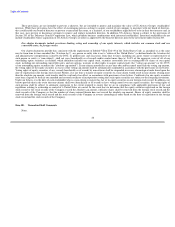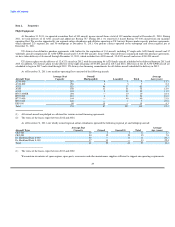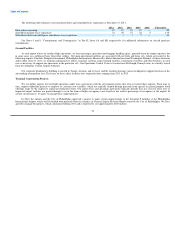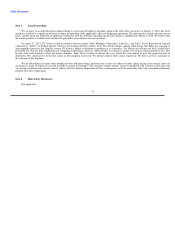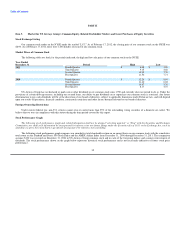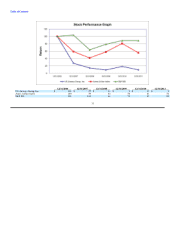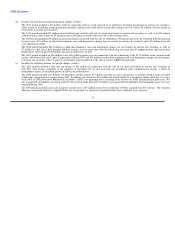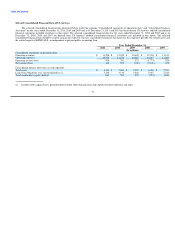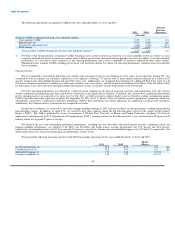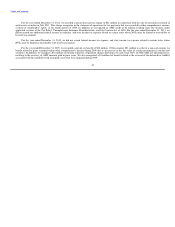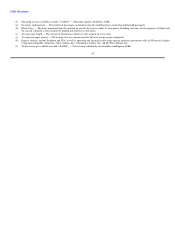US Airways 2011 Annual Report Download - page 41
Download and view the complete annual report
Please find page 41 of the 2011 US Airways annual report below. You can navigate through the pages in the report by either clicking on the pages listed below, or by using the keyword search tool below to find specific information within the annual report.
Table of Contents
Item 7. Management's Discussion and Analysis of Financial Condition and Results of Operations
Background
US Airways Group is a holding company whose primary business activity is the operation of a major network air carrier through its wholly owned
subsidiaries US Airways, Piedmont, PSA, MSC and AAL. Effective upon US Airways Group's emergence from bankruptcy on September 27, 2005, US
Airways Group merged with America West Holdings, with US Airways Group as the surviving corporation.
We operate the fifth largest airline in the United States as measured by domestic RPMs and ASMs. We have hubs in Charlotte, Philadelphia and
Phoenix and a focus city in Washington, D.C. at Ronald Reagan Washington National Airport. We offer scheduled passenger service on more than 3,100
flights daily to more than 200 communities in the United States, Canada, Mexico, Europe, the Middle East, the Caribbean, and Central and South America.
We also have an established East Coast route network, including the US Airways Shuttle service. We had approximately 53 million passengers boarding our
mainline flights in 2011. As of December 31, 2011, we operated 340 mainline jets and are supported by our regional airline subsidiaries and affiliates
operating as US Airways Express under capacity purchase agreements, which operated 233 regional jets and 50 turboprops. Our prorate carriers operated
seven turboprops and seven regional jets at December 31, 2011.
2011 Year in Review
The U.S. Airline Industry
A strong pricing environment resulting from ongoing industry capacity discipline and robust consumer demand for air travel drove higher revenues and
profitable 2011 operations for substantially all major U.S. airlines. These higher revenues allowed the airline industry to partially offset a very significant
increase in fuel prices.
Airlines for America, the trade association for U.S. airlines formerly known as the Air Transport Association, reported that annual 2011 U.S. industry
passenger revenues and yields increased 10.2% and 9.4%, respectively, as compared to 2010. With respect to the U.S. airline industry's international versus
domestic performance, international markets outperformed domestic markets in year-over-year improvements in passenger revenues and yields. Airlines for
America reported that annual 2011 international passenger revenues and yields increased on a year-over-year basis by 11.8% and 10.1%, respectively,
whereas domestic market passenger revenues and yields increased on a year-over-year basis by 9.4% and 9.2%, respectively. Latin American and Pacific
markets led the stronger international performance whereas Atlantic market performance was weaker than domestic.
Fuel costs continued to be a significant uncertain variable for the industry. During 2011, jet fuel prices followed the price of Brent crude oil more
closely than the price of West Texas Intermediate crude oil. The average daily spot price for Brent crude oil during 2011 was $111 per barrel. This compares
to an average daily spot price of $80 per barrel for Brent crude oil during 2010. Brent crude oil prices were volatile in 2011, with daily spot prices fluctuating
between a low of $94 per barrel in January 2011 to a high of $127 per barrel in May 2011, and a year-end close of $108 per barrel on December 31, 2011.
Significant uncertainty continues to exist regarding the economic conditions driving passenger demand and whether airlines will have the ability to
maintain or increase fares at levels sufficient to absorb high fuel prices. See Part I, Item 1A, Risk Factors — "Downturns in economic conditions adversely
affect our business" and "Our business is dependent on the price and availability of aircraft fuel. Continued periods of high volatility in fuel costs, increased
fuel prices and significant disruptions in the supply of aircraft fuel could have a significant negative impact on our operating results and liquidity."
38


